
President Donald Trump and First Lady Melania – 2018
As legacy media continues to fail nationwide, The Atlantic magazine publishes a powerful story from a survivor.
Austin Murphy declares, “I used to write for Sports Illustrated. Now I deliver packages for Amazon. There’s a certain novelty, after decades at a legacy media company, in playing for the team that’s winning big.”
Murphy begins:
 Holiday parties were right around the corner, and I needed a cover story. I didn’t feel like admitting to casual acquaintances, or even to some good friends, that I drive a van for Amazon. I decided to tell them, if asked, that I consult for Amazon, which is loosely true: I spend my days consulting a Rabbit, the handheld Android device loaded with the app that tells me where my next stop is, how many packages are coming off the van, and how hopelessly behind I’ve fallen.
Holiday parties were right around the corner, and I needed a cover story. I didn’t feel like admitting to casual acquaintances, or even to some good friends, that I drive a van for Amazon. I decided to tell them, if asked, that I consult for Amazon, which is loosely true: I spend my days consulting a Rabbit, the handheld Android device loaded with the app that tells me where my next stop is, how many packages are coming off the van, and how hopelessly behind I’ve fallen.
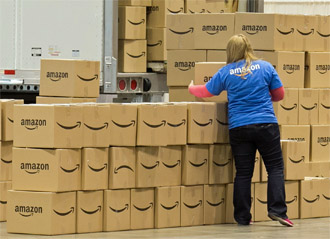 Let’s face it, when you’re a college-educated 57-year-old slinging parcels for a living, something in your life has not gone according to plan. That said, my moments of chagrin are far outnumbered by the upsides of the job, which include windfall connections with grateful strangers. There’s a certain novelty, after decades at a legacy media company—Time Inc.—in playing for the team that’s winning big, that’s not considered a dinosaur, even if that team is paying me $17 an hour (plus OT!).
Let’s face it, when you’re a college-educated 57-year-old slinging parcels for a living, something in your life has not gone according to plan. That said, my moments of chagrin are far outnumbered by the upsides of the job, which include windfall connections with grateful strangers. There’s a certain novelty, after decades at a legacy media company—Time Inc.—in playing for the team that’s winning big, that’s not considered a dinosaur, even if that team is paying me $17 an hour (plus OT!).
It’s been healthy for me, a fair-haired Anglo-Saxon with a Roman numeral in my name (John Austin Murphy III), to be a minority in my workplace, and in some of the neighborhoods where I deliver. As Amazon reaches maximum ubiquity in our lives (“Alexa, play Led Zeppelin”), as online shopping turns malls into mausoleums, it’s been illuminating to see exactly how a package makes the final leg of its journey.
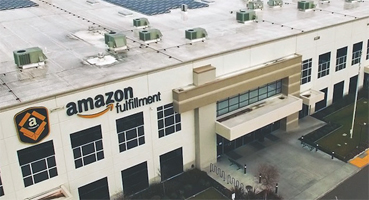
Amazon Fulfillment Center, Patterson
There’s also a bracing feeling of independence that attends piloting my own van, a tingle of anticipation before finding out my route for the day. Will I be in the hills above El Cerrito with astounding views of the bay, but narrow roads, difficult parking, and lots of steps?
Or will my itinerary take me to gritty Richmond, which, despite its profusion of pit bulls, I’m starting to prefer to the oppressive traffic of Berkeley, where I deliver to the brightest young people in the state, some of whom may wonder, if they give me even a passing thought: What hard luck has befallen this man, who appears to be my father’s age but is performing this menial task?
Thanks for asking!
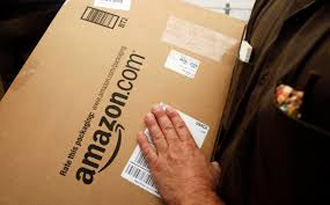 The hero’s journey, according to Joseph Campbell, features a descent into the belly of the beast: Think of Jonah in the whale, or me locked in the cargo bay of my Ram ProMaster on my second day on the job, until I figured out how to work the latch from the inside. During this phase of the journey, the hero becomes “annihilate to the self”—brought low, his ego shrunk, his horizons expanded. This has definitely been my experience working for Jeff Bezos.
The hero’s journey, according to Joseph Campbell, features a descent into the belly of the beast: Think of Jonah in the whale, or me locked in the cargo bay of my Ram ProMaster on my second day on the job, until I figured out how to work the latch from the inside. During this phase of the journey, the hero becomes “annihilate to the self”—brought low, his ego shrunk, his horizons expanded. This has definitely been my experience working for Jeff Bezos.
During my 33 years at Sports Illustrated, I wrote six books, interviewed five U.S. presidents, and composed thousands of articles for SI and SI.com. Roughly 140 of those stories were for the cover of the magazine, with which I parted ways in May of 2017. Since then, as Jeff Lebowski explains to Maude between hits on a postcoital roach, “my career has slowed down a little bit.”
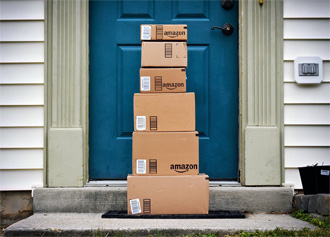 This proved problematic when my wife and I decided to refinance our home. Although Gina, an attorney, earns plenty, we needed a bit more income to persuade lenders to work with us. It quickly became clear that for us to qualify, I would need more than occasional gigs as a freelance writer; I would need a steady job with a W-2. Thus did I find myself, after replying to an indeed.com posting for Amazon delivery drivers, emerging from an office-park lavatory a few miles from my house, feigning nonchalance as I handed a cup of urine to the attendant and bid him good day.
This proved problematic when my wife and I decided to refinance our home. Although Gina, an attorney, earns plenty, we needed a bit more income to persuade lenders to work with us. It quickly became clear that for us to qualify, I would need more than occasional gigs as a freelance writer; I would need a steady job with a W-2. Thus did I find myself, after replying to an indeed.com posting for Amazon delivery drivers, emerging from an office-park lavatory a few miles from my house, feigning nonchalance as I handed a cup of urine to the attendant and bid him good day.
Little did I know, while delivering that drug-test sample, that this most basic of human needs—relieving oneself—would emerge as one of the more pressing challenges faced by all “delivery associates,” especially those of us crowding 60. An honest recounting of this job must include my sometimes frantic searches for a place to answer nature’s call.
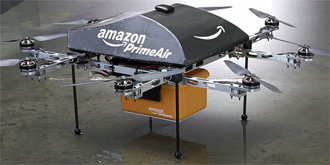 To cut its ballooning delivery costs — money it was shelling out to UPS and FedEx — Amazon recently began contracting out its deliveries to scores of smaller companies, including the one I work for. Amazon trains us, and provides us with uniform shirts and hats, but not with a ride. Before 7 a.m., we report to a parking lot near the warehouse where we select a vehicle from our company’s motley fleet of white and U-Haul vans.
To cut its ballooning delivery costs — money it was shelling out to UPS and FedEx — Amazon recently began contracting out its deliveries to scores of smaller companies, including the one I work for. Amazon trains us, and provides us with uniform shirts and hats, but not with a ride. Before 7 a.m., we report to a parking lot near the warehouse where we select a vehicle from our company’s motley fleet of white and U-Haul vans.
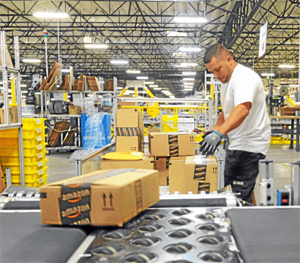
I’m an Aries, so it stands to reason that I’m partial to Dodge Ram ProMasters. I like their profile and tight turning radius: That’s key, since we make about 100 U-turns and K-turns a day. Problem is, most of the drivers in our company — there are about 40 of us — share my preference. The best vans go to drivers with seniority, even if they show up after I do.
Before it was taken out of service for repairs, I was often stuck with a ProMaster that had issues: Side-view mirrors spiderwebbed; the left mirror held fast to the body of the van by several layers of shrink-wrap. The headlights didn’t work unless flicked into “bright” mode, which means that when delivering after dark, I was blinding and infuriating oncoming motorists.
